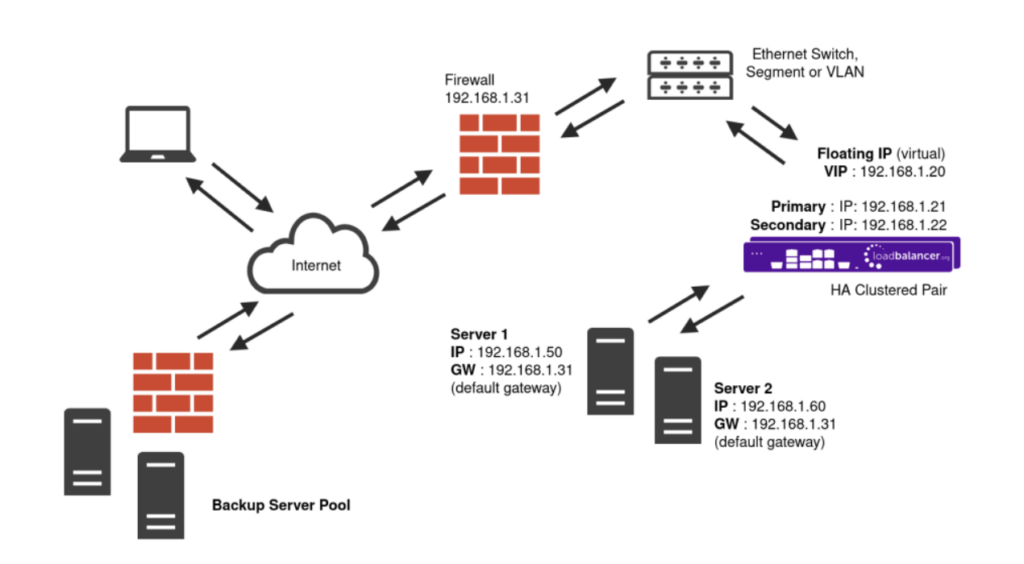PowerSchool eSchoolPlus SIS

Useful resources
About PowerSchool eSchoolPlus SIS
The PowerSchool eSchoolPlus Student Information System (SIS) is designed to optimize student data management and operations.
In addition to scheduling, attendance, state reporting, data management, faculty management, enrollment, and more, eSchoolPlus SIS offers flexibility and interoperability to meet the hybrid education needs of today and tomorrow.
Key benefits of load balancing
Here are a few key benefits:
- Ensures the application is always available
- Provides stable, optimal performance
- Ability to isolate servers which reduces risk when performing upgrades/ maintenance
- Scalability
How to load balance PowerSchool eSchoolPlus SIS
The load balancer can be deployed in 4 fundamental ways: Layer 4 DR mode, Layer 4 NAT mode, Layer 4 SNAT mode, and Layer 7 SNAT mode.
For PowerSchool eSchoolPlus SIS, using Layer 7 SNAT mode is recommended.
Layer 7 SNAT mode
Layer 7 SNAT mode uses a proxy (HAProxy) at the application Layer. Inbound requests are terminated on the load balancer and HAProxy generates a new corresponding request to the chosen Real Server. As a result, Layer 7 is typically not as fast as the Layer 4 methods. Layer 7 is typically chosen when either enhanced options such as SSL termination, cookie based persistence, URL rewriting, header insertion/deletion etc. are required, or when the network topology prohibits the use of the Layer 4 methods.

Because Layer 7 SNAT mode is a full proxy, any server in the cluster can be on any accessible subnet including across the Internet or WAN. Layer 7 SNAT mode is not transparent by default, i.e. the Real Servers will not see the source IP address of the client, they will see the load balancer’s own IP address by default, or any other local appliance IP address if preferred (e.g. the VIP address). This can be configured per Layer 7 VIP. If required, the load balancer can be configured to provide the actual client IP address to the Real Servers in 2 ways. Either by inserting a header that contains the client’s source IP address, or by modifying the Source Address field of the IP packets and replacing the IP address of the load balancer with the IP address of the client.
Layer 7 SNAT mode can be deployed using either a one-arm or two-arm configuration. For two-arm deployments, eth0 is normally used for the internal network and eth1 is used for the external network although this is not mandatory. Requires no mode-specific configuration changes to the load balanced Real Servers. Port translation is possible with Layer 7 SNAT mode, e.g. VIP:80 → RIP:8080 is supported. You should not use the same RIP:PORT combination for Layer 7 SNAT mode VIPs and Layer 4 SNAT mode VIPs because the required firewall rules conflict.
deployment guide

PowerSchool eSchoolPlus SIS Deployment Brief
Read deployment guidemanual

Administration manual
Read manualblogs

Load balancing Moodle's learning application system (LMS)
Read blog
Uptime in education: resilient applications in schools, colleges and universities
Read blog
Considerations for higher education institutions rolling out virtual desktops
Read blogother

Load balancing for reliable and secure higher education applications
Read other

